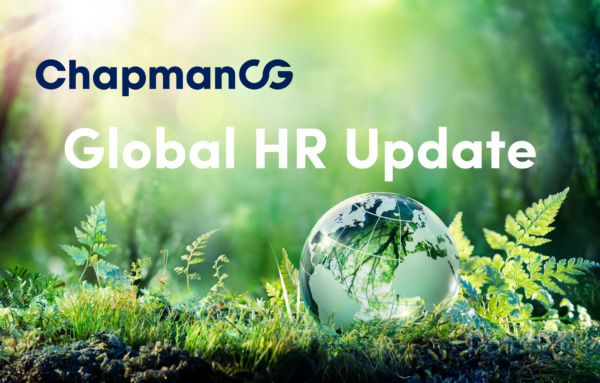Most large global organisations now utilise sophisticated HR Information Systems, such as Workday or SuccessFactors. As a result, the HR profession is now in the exciting position of being able to leverage data to inform strategic workforce decisions in a way that has not previously been possible. HR Analytics capabilities are still under-developed in most organisations, and there is a fair way to go before the full and powerful potential of HR analytics is harnessed.
With many of the compliance and process aspects of HR now located in low-cost shared services centres, HR Generalists, Business Partners and specialists are now in a position to draw on data insights and add more value. Importantly, HR analytics also enables the allocation of HR time to talent issues that have the highest impact, rather than spending time on projects and activities that deliver less value.
We’re now seeing companies work through the initial challenges involved in figuring out how to best use the systems and data that enable HR analytics. There is a very real risk of information overload, and also of poor presentation of data, vis-a-vis actually connecting talent metrics to the stakeholder’s business priorities or decisions.
Research conducted by the Harvard Business Review indicates that to enable faster and more effective decision-making, your analytics must be:
- Relevant: HR analysts need to apply data to the business issue (a top-down approach), rather than using an unnecessary amount of resources for bottom-up data mining.
- Valid: The quality of data is important, along with the way business leaders are educated about the credibility of talent metrics.
- Compelling: Of the hundreds of HR leaders I speak with each year, one of the most common goals of analytics is to tell a better story through the data. HR can’t just present raw numbers and expect the recipient to identify the correct message. Analysts need to understand the audience, create a plot of related storylines, and deliver conclusions that tie together the principal facts.
- Transformative: Ultimately, actionable analytics should change a leader’s behaviour. As a result of talent data, a leader must be able to change his or her thinking and make better, faster decisions. 1
Which Companies are Leading the Way in HR Analytics?
The companies we know of that are most successful at HR analytics are the ones that have prioritised their HR challenges in order of strategic importance, and use the data to inform their decisions on how best to address these challenges.
Many large companies have created a “number crunching”, data reporting team in their low-cost shared services centres. Once a slick data delivery team is functioning well, the HR Analytics experts, strategic HR specialists or COE specialists can order reports tailored to their requirements. If there is a large HR Analytics team, they will do much of the analytical and insight work themselves, and then present it to the HR leaders or broader business. The large banks, telecommunications and IT companies are leading the way in this space, as are some FMCG companies, who have always been heavily data-driven from a marketing perspective.
Google, not surprisingly, is a world leader in HR and workforce analytics. To give you an idea of where things are headed, one-third of Google’s HR team comprises data scientists. Laszlo Bock, SVP People Operations at Google, described the structure of his HR team in a YouTube interview last year: “We very deliberately set a goal of having an HR department using a three-thirds model. One-third of the people come from traditional HR backgrounds. They’re outstanding HR Generalists and outstanding Compensation and Benefits folks.
The second third come out of strategy-consulting firms. We don’t really pursue folks from the HR consultancies as much, because we are looking for two things: great problem-solving skills–the ability to take a really messy problem, disaggregate it, and drive to data-driven answers–and really deep business sense, a deep understanding of how business actually works in the different functions. What we have found is that when you put those two together, the HR folks learn a tremendous amount about business and problem-solving from the consultants, and the consultants get very quickly up to speed on the pattern recognition you need to be successful on the people side.
The last third of people have advanced degrees in various analytic fields, so PhD’s and Master’s degrees in operations, physics, statistics, psychology and org psych, and what they do is let us run all kinds of interesting experiments and raise the bar on everything we do.” 2
So the Google HR model is highly strategic and very focused on problem-solving to drive organisational performance, all backed up by compelling data.
What Are Some of the More Advanced Data-Driven HR Insights Being Made?
We recently spoke with Gina Wood, Senior Advisor Business Analytics, at Deloitte, and she shared the following data-driven HR insights that she is seeing from the more advanced implementations:
- Likelihood of individual employees leaving company – predictive based on specific variables.
- Cost of acquisition vs. length of stay with firm – the lower the acquisition cost and the longer an employee is with an organisation, the lower the likelihood the person will leave – corollary, higher likelihood the person has a lower productivity rate.
- Talking the diversity talk, but not walking the diversity walk – after a focussed programme of creating more roles to encourage diversity, organisations still have disappointing rates of participation. Solution – go to the schools and universities to encourage minority group participation in relevant courses.
- Level of Employee Engagement – extent to which people are involved in different projects, identify with the corporate image/brand, believe in the future of the organisation, align with the strategy, etc. Reflects likelihood of retention.
- Ineffective interviews – after third or fourth interview, subsequent interviews to determine the quality of the candidate have no impact on either performance or retention.
- Higher education degree is not always a good predictor of performance – industry specific – individuals with experience can be creative in ways other than those with formal training. Certificates, for example, do not lead to better outcomes in projects or project management, in particular for large-scale systems implementation projects.
- Compensation should not be bunched around the mean – high performers are more likely to depart if out-performing the middle and not compensated for this (which can take forms other than just financial). 3
Other insights include: which learning and development programmes have been most successful? Do successful team managers have certain common competencies and attributes (success profiling)? How do you give someone a pay rise or a promotion in a way that maximises happiness? What is the optimal mix of compensation for certain role types — cash? Shares? Bonuses or more flexible working arrangements? Which HR programmes and investment yields the greatest productivity?
We’re seeing HR analytics becoming more prevalent in informing remuneration, benefits, Short-Term Incentives, Long-Term Incentives and recognition programmes. It is also a crucial tool in strategic workforce planning, and it’s fascinating to see HR Analytics challenge traditional paradigms, such as whether or not qualifications and grades are a predictor of success.
The Global Talent Pool for HR Analytics Experts
There is only a small talent pool of true HR analytics specialists globally at present, but it is an evolving profession. Many specialists come
from accounting, finance, statistics or quantitative research backgrounds. The challenge is finding the unique blend of analytical and technical skills, combined with top communication skills and business acumen. Many of the global consulting firms are now successfully providing HR analytics as part of their talent consulting offering. Eventually companies that are large enough will develop their own in-house capability, perhaps as part of their broader data analytics/IT teams.
Data analytics is a combination of understanding the business objectives – across all business functions – and the ability to look at data and create insight from that data within the context of the business objectives. It is critical to formulate the right question first, then look at the data and understand or determine how the data can help answer that question. The HR leaders who can embrace analytics and leverage the data to improve organisational capability, performance and profitability will benefit the most in the long term because this is a big part of the future of HR.
1.“Change Your Company With Better HR Analytics” by Mick Collins, Harvard Business Review, December 11, 2013
2.“Laszlo Bock on Google’s Approach to HR” — YouTube interview, published on February 28, 2014. Take a look: Laszlo Bock YouTube Interview
3.Interview with Gina Wood, Senior Advisor Business Analytics, Deloitte (Singapore)
 Andrea Merrigan
Andrea Merrigan Orelia Chan
Orelia Chan Stanislav Medvedev
Stanislav Medvedev Fleur Daniell
Fleur Daniell Finian Toh
Finian Toh Tim Rayner
Tim Rayner Nicola Hasling
Nicola Hasling Stefanie Cross-Wilson
Stefanie Cross-Wilson


